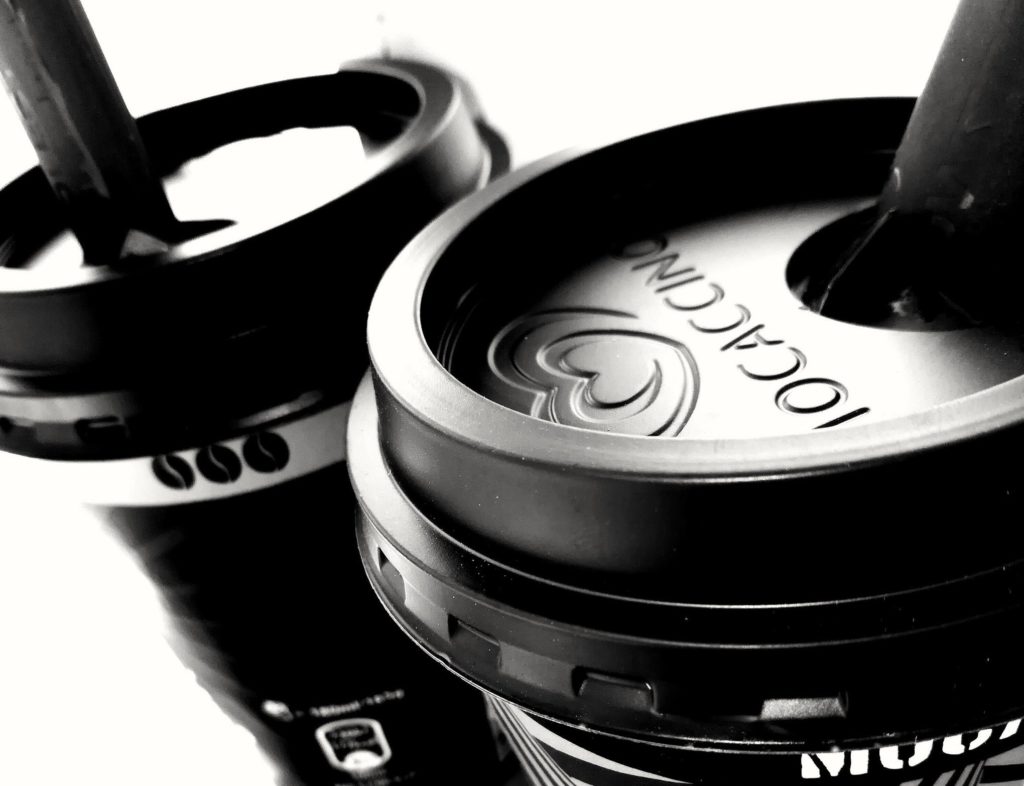At VPIRG, we know that plastic can be incredibly harmful to our health and the environment, which is why we worked to pass the nation’s toughest ban on single-use plastics here in the Green Mountain State. But some kinds of plastic are even worse than others. Take black plastic, for example. It’s used for a variety of food service products, such as single-use coffee cup lids, plastic food trays for packaging, and disposable cutlery, among other items. And, as a consumer, you should do your best to avoid it at all costs.
Single-use plastics are bad news in general, but black plastic is particularly problematic. Even though it is often labelled as recyclable, this plastic is almost never recycled. In addition, some black plastic items are sourced from plastic parts recycled from discarded electronic products, meaning that they are higher in toxic chemicals than other plastics.
In terms of its recyclability, black plastic is problematic because it’s not detectable by most sorting machines. Its presence in the recycling stream also makes it more difficult to recycle other types of plastic. This, coupled with the fact that there are few uses for recycled black plastic due to its lack of color versatility, means there is little incentive to create better sorting technology to address the problem.
In addition, the global commodities market does not buy black plastic because it makes up only about .06% of the international plastic market. Due to its low market value and the inability of most facilities to recycle this plastic, most of it ends up in landfills or, in some instances, it is incinerated. This is particularly problematic in the US because black plastic makes up about 15% of America’s plastic waste.
In Vermont, most waste haulers do not allow black plastic collection and often advise customers not to put these plastics in their blue bins. For example, the Chittenden Solid Waste District (CSWD) does not allow black plastic to be recycled and sends all black plastic material to the landfill.
Because most black plastic is not recycled, some companies are creating these plastic items using the casings from discarded electrical equipment. The electronics often contain chemicals that are extremely harmful to human health. Some examples of those toxic chemicals include phthalates and flame retardants.
A study that investigated these plastics further shows that about 40% of these products contained heavy metals such as cadmium, mercury, and lead. These metals, as well as phthalates and flame retardants, are known carcinogens that can also cause serious developmental and reproductive damage, even at low levels. The study shows that, in some samples, the presence of these chemicals was 30 times greater than government safety standards. Given that the most common uses for these plastics are as packaging for food items or as parts in children’s toys, black plastic poses a serious health concern.
Because black plastic is generally not recycled, these plastics and their chemical additives end up in our landfills or on the side of the road. The toxic chemicals can then find their way into the environment and could end up in our drinking water and food that we eat.
The good news is that a number of Vermont businesses, including some of our excellent craft brewers, are transitioning away from black plastic (as 4-pack or 6-pack rings). VPIRG is encouraging all business to do the same. And we urge consumers to avoid single-use black plastic whenever you can. For example, avoid black lids on your takeaway coffee cups, or better yet, bring your own reusable mug instead.
In addition, given the variety of alternatives to black plastic, Vermont policymakers should consider banning its use for all single-use items as part of broader legislation dealing with single-use materials next year. To be clear, VPIRG believes we should be moving away from all single-use/throwaway products as quickly as possible. But black plastic is particularly bad. Consider it toxic trash and stay away!

